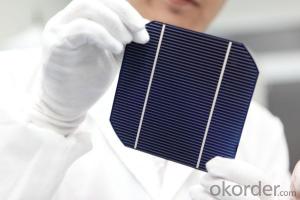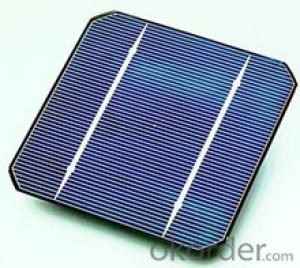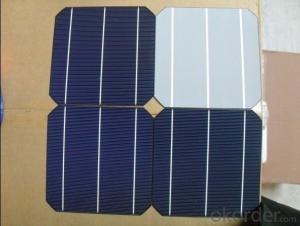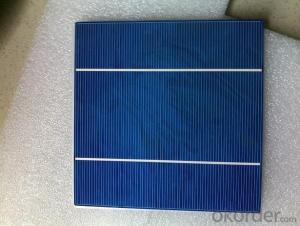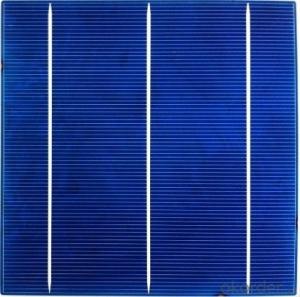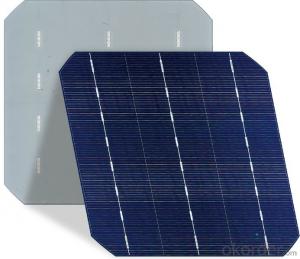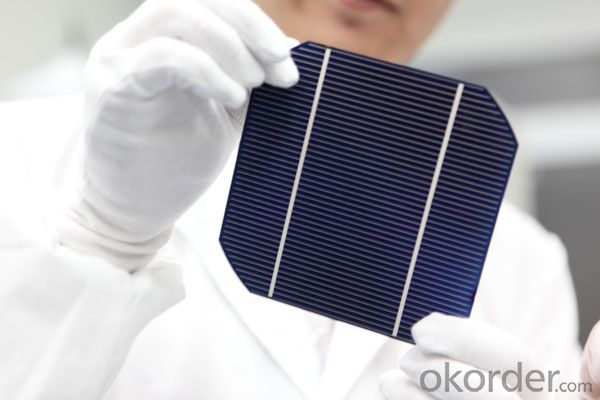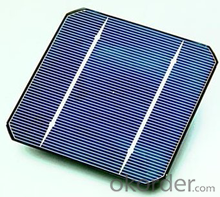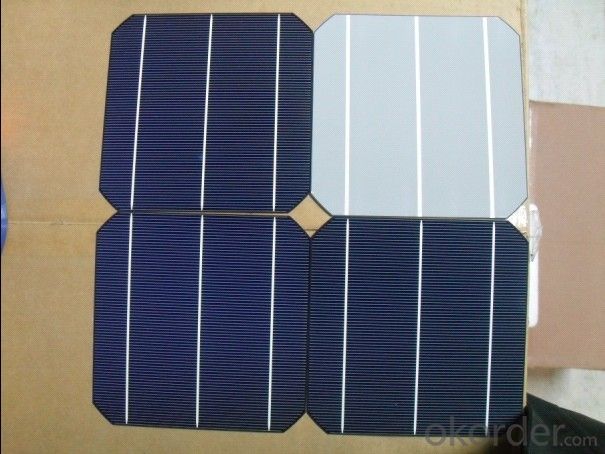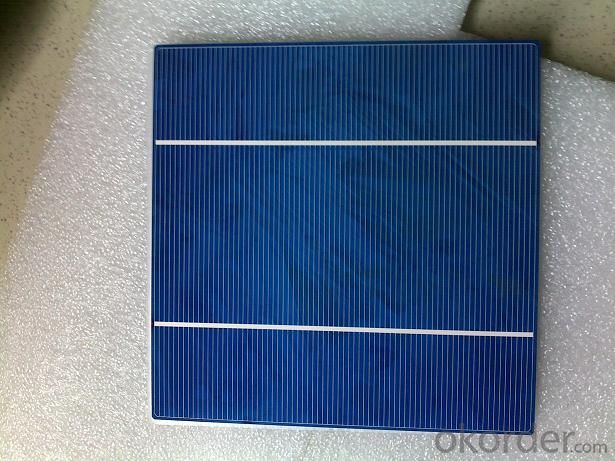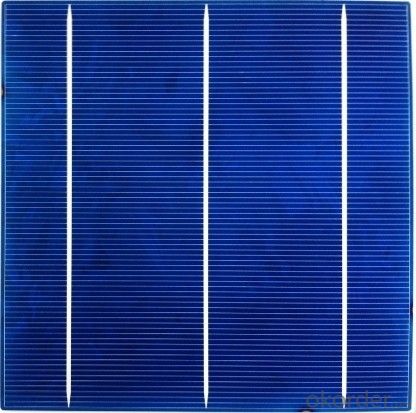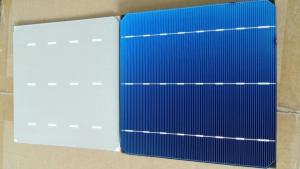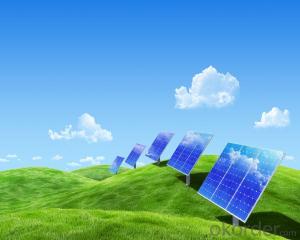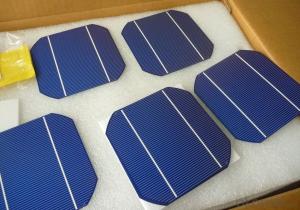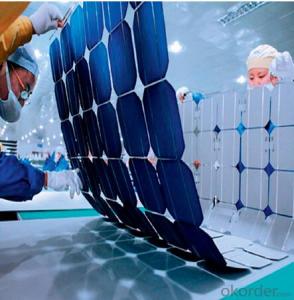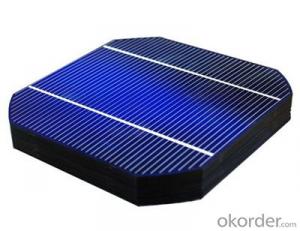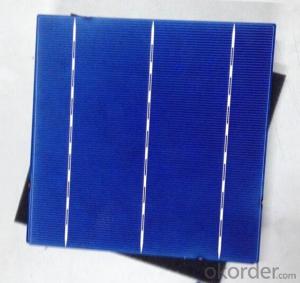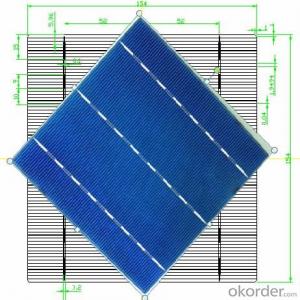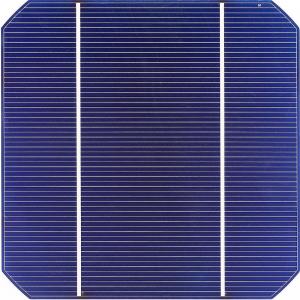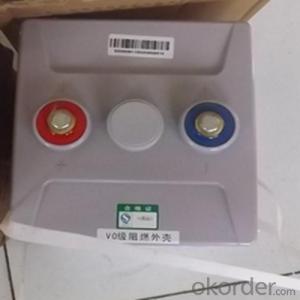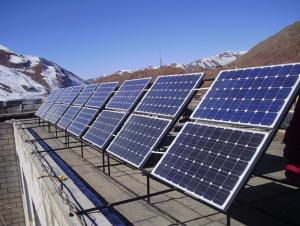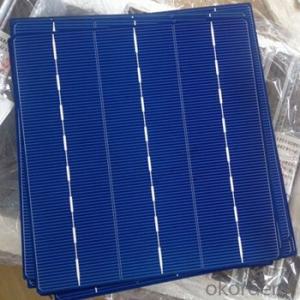CdTe Thin Film Solar Cells - Monocrystalline Silicon Solar Cells 156mm (16.50%-18.35%)
- Loading Port:
- Shanghai
- Payment Terms:
- TT OR LC
- Min Order Qty:
- 1000 watt
- Supply Capability:
- 100000000 watt/month
OKorder Service Pledge
OKorder Financial Service
You Might Also Like
Specification
1.Description of the Solar Cells
Monocrytalline Silicon Solar Cells 156mm (16.50%----18.35%)
We supply regular mono 125x125mm and poly 156x156mm solar cells.
Cells made in China mainland and Taiwan are both available.
Cell production capacity yearly reach 1GW.
Our cells pattern include continuous and uncontinuous busbar to meet different cells line.
2.Mechanical data and design of the Solar Cells
| Format | 156 mm × 156 mm ± 0.5 mm |
| Thickness- | 210 μm ± 40 μm |
| Front (-) | 1.5 mm bus bars (silver),blue anti-reflection coating (silicon nitride) |
| Back (+) | 2.5 mm wide soldering pads (silver) back surface field (aluminium) |
3. Temperature Coefficient of the Solar Cells
| Voc. Temp .coef.%/K | -0.35%/K |
| Isc . Temp .coef.%/K | +0.024%/K |
| Pm. Temp. coef.%/K | -0.47%/K |
4.Electrical Characteristic of the Solar Cells
Efficiency (%) | Pmpp (W) | Umpp (V) | Impp (A) | Uoc (V) | Isc (A) | FF (%) | ||
18.35 | 4.384 | 0.526 | 8.333 | 0.63 | 8.877 | 78.39% | ||
18.20 | 4.349 | 0.526 | 8.263 | 0.63 | 8.789 | 78.54% | ||
18.05 | 4.313 | 0.525 | 8.216 | 0.63 | 8.741 | 78.32% | ||
17.90 | 4.277 | 0.524 | 8.161 | 0.629 | 8.713 | 78.04% | ||
17.75 | 4.241 | 0.523 | 8.116 | 0.629 | 8.678 | 77.70% | ||
17.60 | 4.206 | 0.521 | 8.073 | 0.628 | 8.657 | 77.36% | ||
17.45 | 4.170 | 0.519 | 8.039 | 0.628 | 8.633 | 76.92% | ||
17.30 | 4.134 | 0.517 | 8.004 | 0.626 | 8.622 | 76.59% | ||
17.15 | 4.098 | 0.516 | 7.938 | 0.625 | 8.537 | 76.80% | ||
17.00 | 4.062 | 0.512 | 7.933 | 0.625 | 8.531 | 76.18% | ||
16.75 | 4.002 | 0.511 | 7.828 | 0.625 | 8.499 | 75.34% | ||
16.50 | 3.943 | 0.510 | 7.731 | 0.625 | 8.484 | 74.36% | ||
5.Intensity Dependence of the Solar Cells
Intensity [W/m2] | sc× [mA] | Voc× [mV] |
1000 | 1.00 | 1.000 |
900 | 0.90 | 0.989 |
500 | 0.50 | 0.963 |
300 | 0.30 | 0.939 |
200 | 0.20 | 0.920 |
6.Applications of the Solar Cells
electric power generation
7.IMages of the Solar Cells
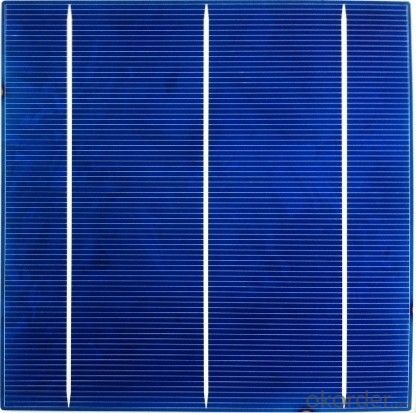
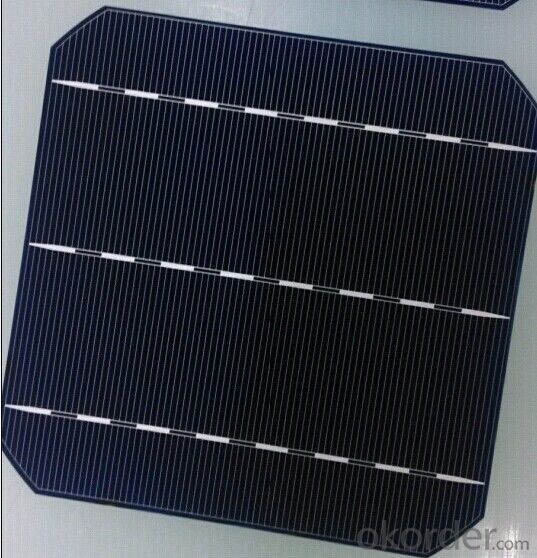
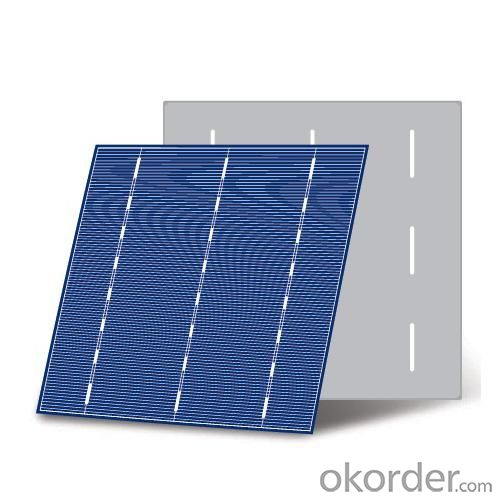
FAQ
- Q: What is the difference between polysilicon and monocrystalline silicon photovoltaic cells?
- Monocrystalline silicon cells with high battery conversion efficiency, good stability, but the higher cost. Polycrystalline silicon cells are less costly and slightly lower in conversion efficiency than straight-drawn monocrystalline silicon solar cells, with various defects in materials such as grain boundaries, dislocations, microdefections, and impurity carbon and oxygen in materials, as well as tarnished during process Transition metal.
- Q: Can solar cells be used at night?
- No, solar cells cannot be used at night as they rely on sunlight to generate electricity.
- Q: How to define the poly solar cells as the A Grade one?
- You can try to define it through the three factors: Efficiency, stability and durability.
- Q: What is 3d solar cell? And anybody know any manufacturers?
- 3d solar cell is 3-dimensional silicon solar cell, which is is designed to maximize the conversion of sunlight into electricity.
- Q: What is the impact of saltwater exposure on solar cell efficiency?
- Saltwater exposure can have a significant negative impact on solar cell efficiency. The saltwater can corrode the metal components of the solar cells, leading to a decrease in their performance and overall efficiency. Additionally, the saltwater can create a conductive pathway that can bypass the solar cells, resulting in a loss of electrical energy. Therefore, it is crucial to protect solar cells from saltwater exposure to maintain their efficiency and prolong their lifespan.
- Q: What is the impact of solar cell installations on job creation?
- The impact of solar cell installations on job creation is significant. The growing demand for renewable energy has created a surge in the solar industry, leading to the creation of numerous job opportunities. Solar cell installations require skilled workers for design, installation, maintenance, and manufacturing, resulting in a wide range of employment opportunities across various sectors. Moreover, the shift towards solar energy creates a ripple effect, stimulating the local economy and supporting job growth in related industries such as construction, engineering, and manufacturing of solar components. Overall, solar cell installations have a positive impact on job creation by fostering a sustainable and green workforce.
- Q: What is a multi-junction solar cell?
- A multi-junction solar cell is a type of photovoltaic cell that consists of multiple layers of different semiconductor materials, each designed to absorb different wavelengths of sunlight. This allows the cell to convert a broader spectrum of light into electricity, resulting in higher efficiency and improved performance compared to traditional single-junction solar cells.
- Q: What materials are used to make solar cells?
- Solar cells are primarily made using materials such as silicon, which is the most commonly used material, as well as other semiconductor materials like cadmium telluride, copper indium gallium selenide, and perovskite.
- Q: Can solar cells be installed on curved surfaces?
- Yes, solar cells can be installed on curved surfaces. Flexible solar panels and technologies like thin-film solar cells allow for installation on various curved surfaces such as vehicles, buildings, and even clothing.
- Q: Can solar cells be used for water heating?
- Yes, solar cells can be used for water heating. Solar thermal panels, also known as solar water heaters, use solar cells to convert sunlight into heat energy, which is then used to heat water for various applications such as domestic hot water or space heating.
Send your message to us
CdTe Thin Film Solar Cells - Monocrystalline Silicon Solar Cells 156mm (16.50%-18.35%)
- Loading Port:
- Shanghai
- Payment Terms:
- TT OR LC
- Min Order Qty:
- 1000 watt
- Supply Capability:
- 100000000 watt/month
OKorder Service Pledge
OKorder Financial Service
Similar products
Hot products
Hot Searches
Related keywords
